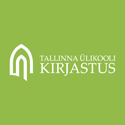Lapsepõlvest laskurseltsides, nooruseast Poola leegionides, täiseast Poola armees. Taastatud Poola armee ajalugu 1914–1920 [From Childhood of the Riflemen’s Association Through Middle Age of the Polish Legions to Adulthood in the Polish Army. History of Rebuilt Polish Army 1914–1920]
Abstract
The purpose of this article is to present the historical process of forming the independent Polish Armed Forces during the Great War. I will also analyse the myth of the Polish Legions – the national myth of the Second Polish Republic. A myth based on one person – Józef Piłsudski, father of the Polish Army as well as of Polish independence. Before the war, there were three major views concerning a future Polish state in Polish society. Two of them were based on the idea of sovereignty within a foreign empire: Russia or Austro-Hungary. Th e smallest group of military volunteers and social activists under the leadership of Józef Piłsudski planned to regain independence by any means. In 1904, during a meeting of the Polish Socialist Party, he announced his independence programme. One of the most important points in this was the re-establishment of the Polish Army. However, his programme did not gain much popularity in Polish society – the trauma aft er the last disastrous Polish uprising in 1863 was too strong.
There was a small group of young idealistic patriots in the part of Poland annexed by Austro-Hungary. Basing on their potential, Piłsudski and his colleagues (Kazimierz Sosnkowski, Władysław Sikorski, Edward Rydz and others) founded the Riflemen’s Association. Before World War I in Galicia (Austro-Hungary), approximately 4,000 men were trained in shooting and tactics. Basing on the Riflemen’s Association, Piłsudski formed the First Cadre Company in August 1914. It came into formation when the Riflemen’s Association and the Polish Rifle Squads were mobilized between 29 July and 2 August 1914 by Piłsudski. On 3 August, the First Cadre was formally created in the Oleandry district of Cracow. The number of members of the company varies according to different sources between 145 and 168 men. This was the first Polish regular military unit since the uprising of 1831.
Piłsudski’s definition of a Polish citizen included all people who work, fight and die for Poland. In the First Company there were also many Polish Jews. During 16–27 August 1914 the First Cadre Company was reorganized and transformed into the Polish Legions. This was the second step – the middle-age of the Polish Armed Forces. Th e Legions became ‘a founding myth for the creation of modern Poland’ in spite of their considerably short existence; they were replaced by the Polish Auxiliary Corps formed on 20 September 1916 and merged later with the 2nd Polish Corps in Russia.
The Polish Legions were the basis for the creation of the Polish Army in 1918. Many generals, powerful politicians, poets and public figures – elites of the nation – started their service in the Polish Legions. The Riflemen’s Association and the Legions were a rock, on which the Polish people built their independent state.
Full Text:
PDFDOI: https://doi.org/10.22601/SAA.2018.08.04
Refbacks
- There are currently no refbacks.
Kirjastaja / Published by:

ISSN 2228-0669 (trükis / print)
